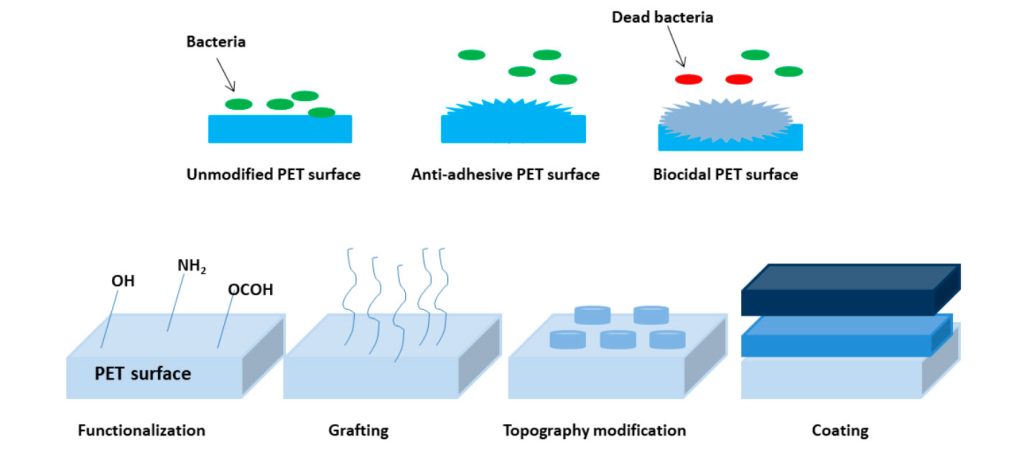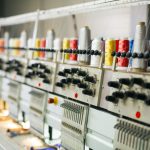Strategies to avoid bacterial contamination on PET (Polyethylene terephthalate) surface are focus on two aspects: anti-adhesive and biocidal surface modifications. The first one induces bacterial repulsion and the second one promotes its dead (Figure, top). Synergy between these aspects is expected to fulfill the goal of bacteria counts minimization on PET surface. There are four main procedures used to modify PET surface1: Functionalization, Grafting, Topography changes and Coating (Figure, bottom). As expected, bacteria cells adhesion increases when surface hydrophobicity increases. Therefore, increasing surface hydrophilicity (Functionalization) by means of attaching hydrophilic groups (-OH, -NH2,-COOH) to its surface avoids bacteria adhesion. An increase on surface roughness may also increase the anti-adhesive characteristic. Plasma and UV treatment are used to modify PET surface roughness. Grafting consists on attaching polymers via covalent chemical bonds to the PET surface: Grafting to when attaching the polymers on the surface (e.g. Lysozyme and Chitosan) and Grafting from when the monomers are attached to the surface and polymerization occurs in a second reaction step, e.g. Radical Polymerization (ATRP) of 2-lactobionamidoethylmethacrylate (LAMA). Topography modification is induced via laser treatment or using lithography. Surface Roughness and wettability are changed inducing anti-adhesive characteristic. Finally, Coating is obtained via layer-by-layer (LbL) methodology where layers are joined via ionic interactions, e.g. chitosan (+):hyaluronic acid (-).
 T. Çaykara, M.G. Sande, N. Azoia, L.R. Rodrigues, C.J. Silva, Medical Microbiology and Immunology (2020) 209:363–372; https://doi.org/10.1007/s00430-020-00660-8
T. Çaykara, M.G. Sande, N. Azoia, L.R. Rodrigues, C.J. Silva, Medical Microbiology and Immunology (2020) 209:363–372; https://doi.org/10.1007/s00430-020-00660-8





